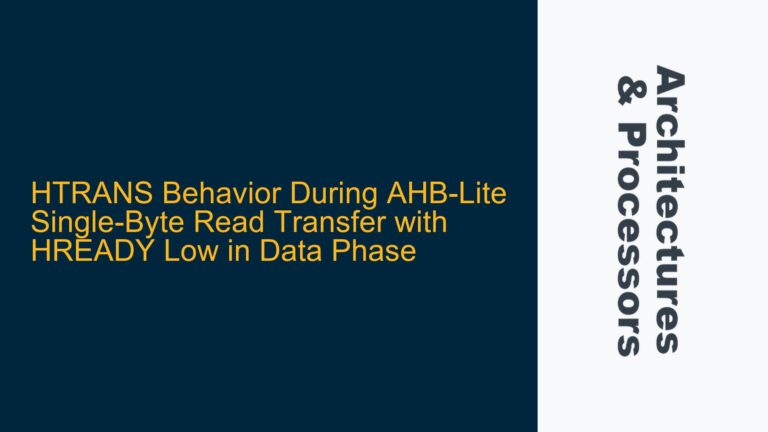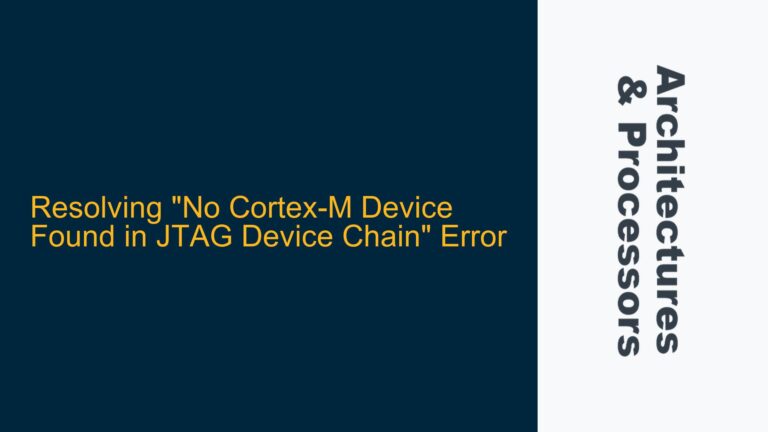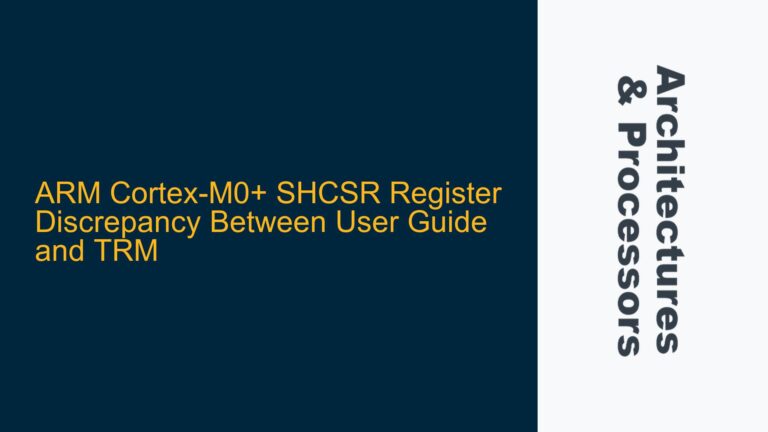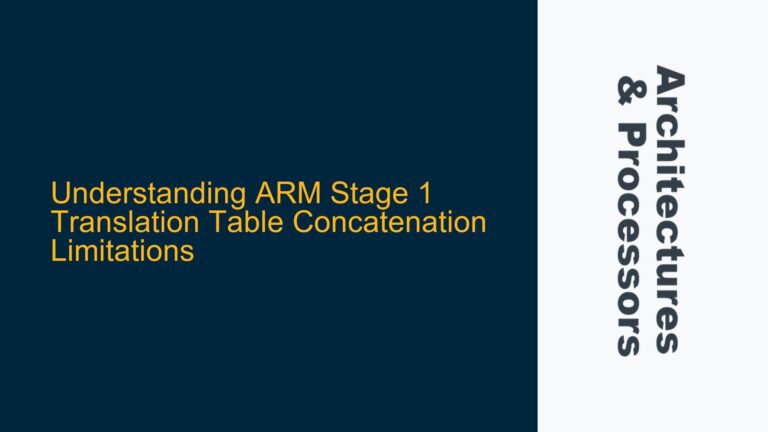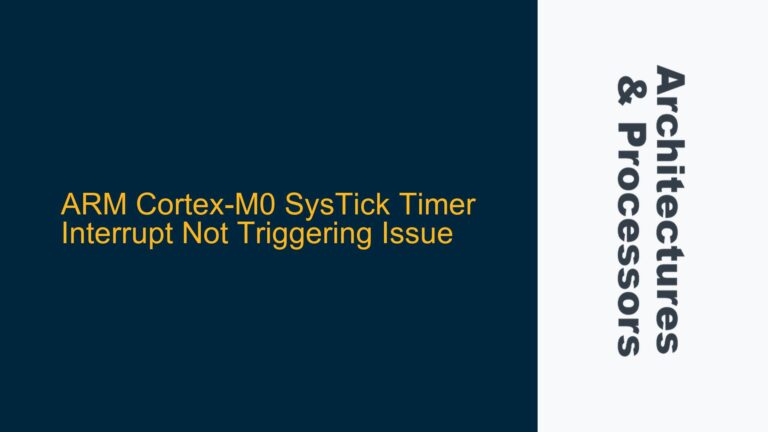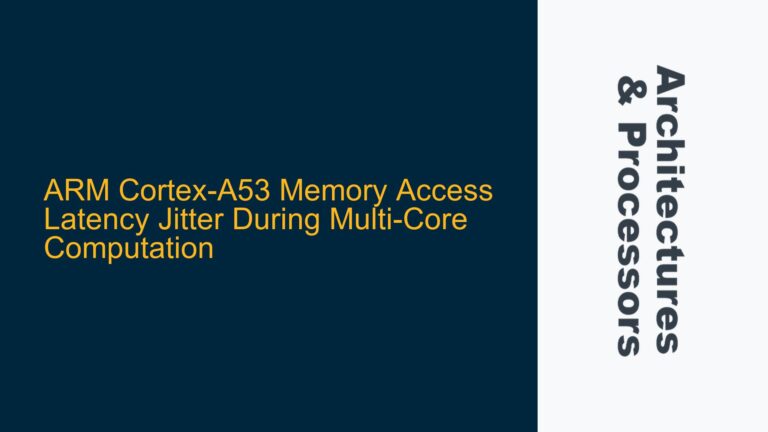ARM Cortex-R52 MPU Configuration Conflict: Device vs. Normal Memory Type Mismatch
The ARM Cortex-R52 processor, designed for real-time and safety-critical applications, employs a Memory Protection Unit (MPU) to enforce memory access rules and attributes. One of the critical features of the MPU is its ability to define memory regions with specific attributes, such as Device or Normal memory types, at different Exception Levels (ELs). However, a configuration conflict arises when a memory region is marked as Device in the EL1-controlled MPU but as Normal in the EL2-controlled MPU. This mismatch can lead to unexpected behavior, such as memory access errors or improper cache management, particularly when the Hypervisor Configuration Register (HCR).VM bit is enabled, and the HSCTLR.M bit is set to enable the MPU at EL2.
The core issue revolves around the inability to generate Error Event 23, which is triggered when a memory access marked as Device in the EL1-controlled MPU is flushed because it is marked as Normal in the EL2-controlled MPU. This error event is crucial for debugging and ensuring system reliability, especially in environments where memory attributes must be strictly enforced across different privilege levels. The problem is exacerbated by the fact that the Cortex-R52’s MPU does not inherently resolve conflicts between memory attributes defined at different ELs, leading to potential inconsistencies in memory access behavior.
Memory Attribute Mismatch and Cache Coherency Implications
The root cause of the issue lies in the mismatch between memory attributes defined at EL1 and EL2. When a memory region is marked as Device in the EL1-controlled MPU, it implies that the region is non-cacheable and requires strict ordering for memory accesses. In contrast, marking the same region as Normal in the EL2-controlled MPU suggests that the region is cacheable and subject to standard cache coherency protocols. This discrepancy can lead to several problems:
-
Cache Coherency Violations: When a memory region is marked as Normal in the EL2-controlled MPU, the processor may attempt to cache data from that region. However, if the same region is marked as Device in the EL1-controlled MPU, the processor may bypass the cache, leading to cache coherency violations. This can result in stale data being read or written, causing unpredictable behavior.
-
Memory Access Ordering Issues: Device memory typically requires strict ordering of memory accesses to ensure that writes and reads occur in the correct sequence. When the memory region is marked as Normal in the EL2-controlled MPU, the processor may reorder memory accesses, leading to incorrect behavior in hardware peripherals or other device-mapped memory.
-
Error Event Generation Failure: The Cortex-R52 is designed to generate Error Event 23 when a memory access marked as Device in the EL1-controlled MPU is flushed because it is marked as Normal in the EL2-controlled MPU. However, if the conditions for triggering this error event are not met, the event may not be generated, making it difficult to diagnose and resolve the issue.
-
MPU Configuration Overlap: The Cortex-R52’s MPU allows for overlapping memory regions with different attributes at different ELs. This overlap can lead to conflicts when the attributes are not consistent across ELs, particularly when the HCR.VM bit is enabled, and the HSCTLR.M bit is set to enable the MPU at EL2.
Resolving MPU Configuration Conflicts and Ensuring Proper Error Event Generation
To resolve the MPU configuration conflict and ensure proper generation of Error Event 23, the following steps should be taken:
-
Consistent Memory Attribute Definition: Ensure that memory attributes are consistent across EL1 and EL2 MPU configurations. If a memory region is marked as Device in the EL1-controlled MPU, it should also be marked as Device in the EL2-controlled MPU. This consistency prevents cache coherency violations and memory access ordering issues.
-
Proper MPU Region Configuration: Carefully configure the MPU regions at both EL1 and EL2 to avoid overlapping regions with conflicting attributes. Use the MPU region base address and size registers to define non-overlapping regions with consistent attributes.
-
Enable MPU at EL2: Ensure that the HSCTLR.M bit is set to enable the MPU at EL2. This allows the MPU to enforce memory access rules and attributes at EL2, preventing conflicts with EL1 MPU configurations.
-
Enable HCR.VM Bit: Set the HCR.VM bit to enable virtualization at EL2. This ensures that the MPU configurations at EL1 and EL2 are properly enforced, particularly when accessing memory regions with different attributes.
-
Trigger Error Event 23: To generate Error Event 23, perform a memory access to a region marked as Device in the EL1-controlled MPU and Normal in the EL2-controlled MPU. Ensure that the access is performed in EL1 with the HCR.VM bit set and the HSCTLR.M bit enabled. The error event should be generated if the conditions are met.
-
Debugging and Verification: Use debugging tools to verify that the MPU configurations at EL1 and EL2 are correctly applied. Check the MPU region attributes and ensure that there are no conflicts. Use the Cortex-R52’s error reporting mechanisms to verify that Error Event 23 is generated when expected.
-
Cache Management: If cache coherency issues persist, consider using cache maintenance operations to invalidate or clean the cache for the affected memory regions. This ensures that the cache does not hold stale data and that memory accesses are properly ordered.
-
Firmware Updates: Ensure that the firmware running on the Cortex-R52 is up to date. ARM may release updates that address known issues with MPU configuration and error event generation. Applying these updates can resolve potential bugs and improve system reliability.
By following these steps, the MPU configuration conflict can be resolved, and Error Event 23 can be properly generated. This ensures that memory access rules and attributes are consistently enforced across different Exception Levels, preventing cache coherency violations and memory access ordering issues. Proper MPU configuration and error event generation are critical for maintaining system reliability, particularly in real-time and safety-critical applications where memory access behavior must be strictly controlled.

